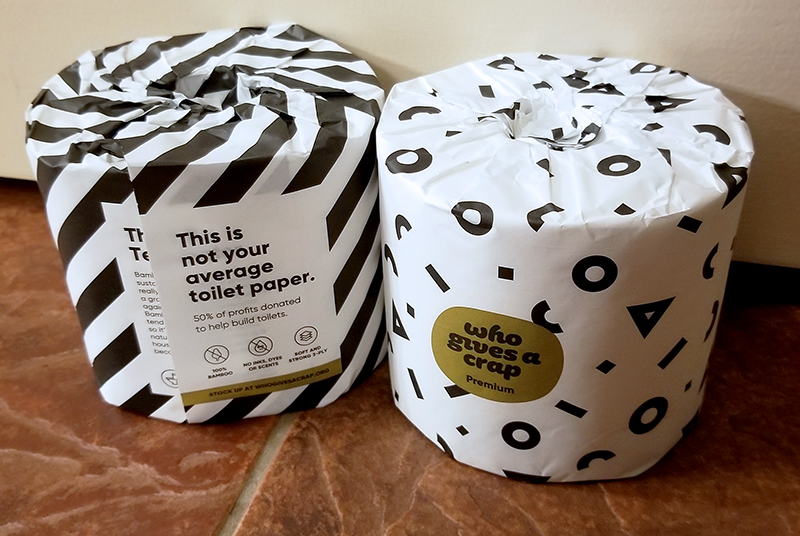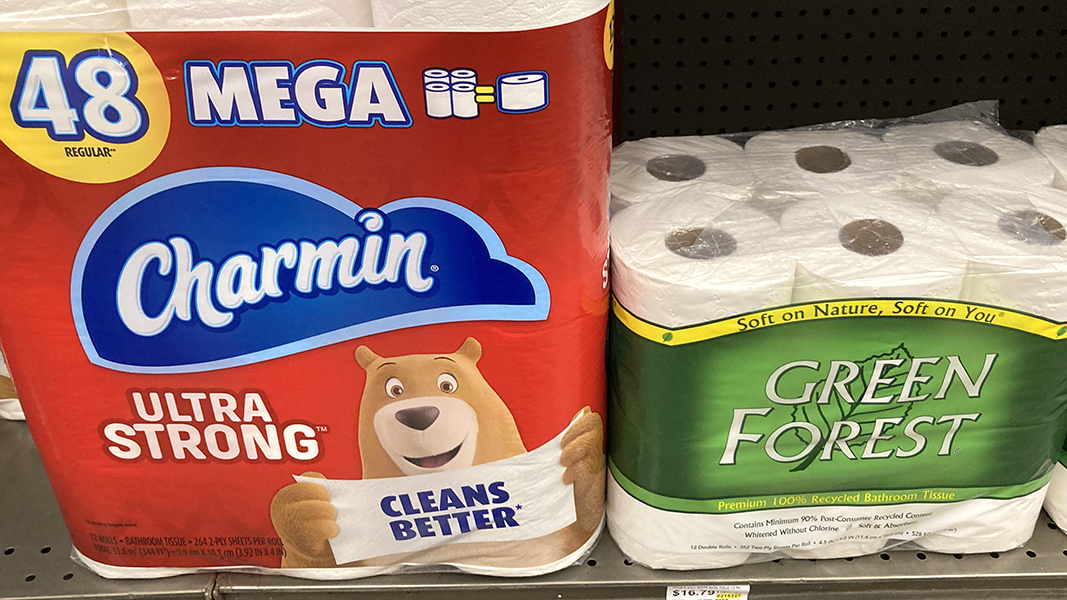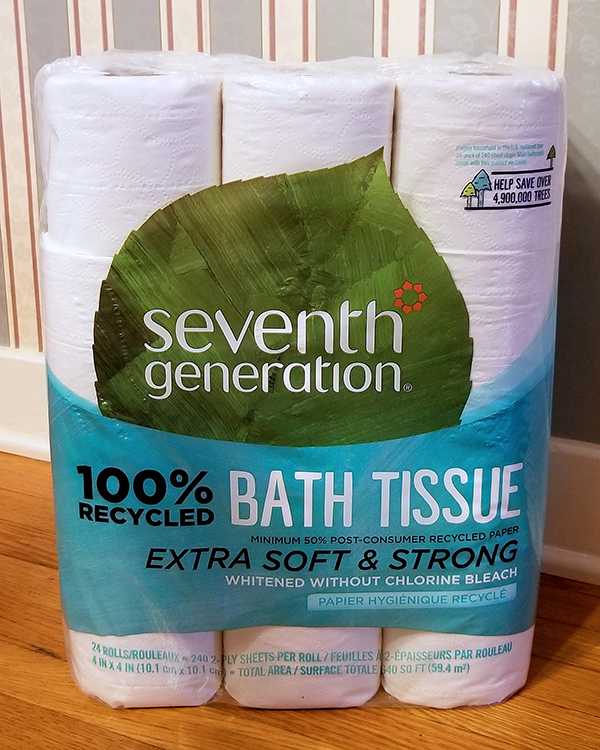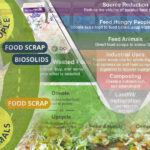Top: Sales of toilet paper in the U.S. were worth $13.4 billion in 2019.
 Sally Brown
Sally Brown
I had the honor of interviewing Paul Hawken, editor of Drawdown, as part of the virtual US Composting Council annual conference in January 2021. Drawdown is huge. It has made an enormous contribution to our understanding of steps we can take now to remove carbon dioxide from the atmosphere. It has put climate action into the hands of everyone.
As part of the interview, I asked Paul what he was doing in winter of 2021 to further impact climate change. Count me as more than a little surprised when he answered that his big effort was writing letters to toilet paper manufacturers to stop cutting down virgin forest to make toilet paper.
Toilet paper. Not anywhere near the Drawdown Top 100 list of climate change causes that I remember. No glamour for Paul. No protests. Instead, letters to companies that may not even recognize that they are signed by an environmental champion.
Toilet paper had never registered on my “make the planet better” to do list. On a personal level, toilet paper registered when by mistake I bought scented or single ply or even worse, forgot to buy any at all. Toilet paper registered on a family level when shopping for my mother who was very particular and liked the brand that came in extra strong and extra soft — likely the very brand that Paul was so upset about. Toilet paper recently registered for everyone when they couldn’t buy any in the early days of the COVID-19 pandemic.
The Stats
I had forgotten about this whole burning environmental issue and was just luxuriating in my excess supply post COVID when a friend told me about her friends who were starting a bamboo-based toilet paper business. Perhaps there was something to Paul’s letter writing campaign.

Who Gives A Crap offers both 100% bamboo and 100% post-consumer recycled options and is free of plastic packaging
Some online sleuthing revealed that internationally, the toilet paper and tissue industry brought in over $34.7 billion in 2019. In the U.S., about 70% of that revenue was associated with sales of Georgia Pacific (Quilted Northern and Angel Soft), Procter & Gamble (Charmin), Kimberly-Clark (Scott and Cottenelle) and Cascades. Sales of toilet paper alone was worth $13.4 billion in the U.S. To my knowledge, only one of these companies allow for you to wipe your nose or your behind with products containing recycled paper (Cascades Fluff Enviro). Bamboo doesn’t even register.
A quick look at the Charmin website (my mother’s brand of choice) talks about sustainability but does not mention recycled content. In my mother’s mind, recycled content directly translated to sandpaper equivalent. The NRDC (Natural Resources Defense Council) says that Charmin’s claims of sustainability are pretty much sand paper. The NRDC report is right on with what Paul Hawken was saying. The primary source of trees for Charmin is the Canadian Boreal forest where trees are clear-cut to make two ply. The report talks about the “tree to toilet pipeline” and debunks the company claims of sustainability.
Further investigating revealed that a tree of harvestable size produces about 100 pounds or 1,500 rolls of toilet paper. As with so many things, use of toilet paper in the U.S. is much higher than in other parts of the world with one site suggesting that we use about 23 kg or more than 50 pounds per capita per year. Another site estimated that a family of 2.6 people uses 409 rolls per year, which comes to about 157 rolls per person per year. (That 0.6 individual is likely content with the single ply stuff.)
How Many Trees?
Using those statistics, we can estimate how many trees that involves.
- The U.S. population is 330 million.
Assuming 157 rolls per person per year that comes to:
330 million people * 157 rolls per person = 52 billion rolls of toilet paper per year - We can then take that to the number of trees required:
52 billion rolls/1,500 rolls per tree = 34.67 million trees - In the commercial tree plantations in the Pacific Northwest where they grow Douglas Fir — a common type of tree used in toilet paper — the stocking density (number of trees/acre) can vary but we can use 1,000 trees/acre as a reasonable number. Where I live it takes about 40 years to grow a tree that is suitable for Charmin
34.67 million trees/1,000 trees per acre = 34,670 acres of trees harvested per year
I then looked at the scientific literature for any mention of toilet paper. I found out that toilet paper only became common in the U.S. in the last 100+ years. It was such a hot commodity during World War I that soldiers would search the pockets of enemy casualties hoping to find rations of the stuff. The COVID toilet paper shortage wasn’t the first — World War II also caused a run on toilet paper in markets.
Embracing Recycled Content
On a more relevant note, two studies looked at consumers purchasing patterns to see if environmental impact would play a part in toilet paper selection. One study was based in Denmark where there is a recognized label to connote environmentally sound products. Here the authors noted that use of that label on toilet paper significantly impacted consumers’ purchasing with an increase of about 13% when the label was added to the product.
Another study looked at recycled content toilet paper from Germany and Japan and consumer rankings of the recycled versus the virgin products. They found that both the appearance and very idea of using toilet paper with recycled content was not appealing to the Japanese consumer. People bought virgin paper as a result of brand loyalty. They bought recycled paper only out of environmental concerns. The last sentence of the abstract says it all: “Most people have not realized that without the consumption of recycled products, the recycling system is not completed.”
Seems like Paul has a point. In starting the research for this column, I bought a package of recycled content toilet tissue. My mother, bless her memory, had a point. There is a sandpaper quality to it. I can live with that. I also looked for and found several places on line to buy bamboo-based products and will test those out in the near future. I would wager that most people are as ignorant about the environmental impact of toilet tissue as I was. Fossil fuels are prominent in the public discourse, not toilet tissue. But little actions can make a big difference. Think twice before you squeeze your next role of Charmin.
Sally Brown, BioCycle Senior Adviser, is a Research Professor in the College of the Environment at the University of Washington.















